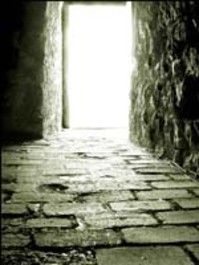Have you read the latest survey on teenagers? Two weeks ago George Barna, the Christian demographer, released a new national survey of 602 teenagers, in which they were asked to describe what they think their lives will be like in ten years. And their responses are intriguing.
Boding well for an academic community like ours, their top-rated priority for the future was finishing a college degree (93% of them declaring that by the age of 25 that would definitely or probably happen). Their next highest ten year life goal was to “have a great paying job” (81% of these teens believe it will definitely or probably happen). Their third highest goal was to “have a job where you can make a difference” (80%). And just behind that was their #4 goal, to have “a close, personal relationship with God” (72% felt such a relationship would definitely or probably be a reality ten years from now). The rest of their top ten ten-year goals in this survey were: #5, travel to other countries (71%); #6, to be “actively involved in a church or faith community” (63%); #7, to be married (58%); #8, to regularly serve the poor (48%); #9, to have children (40%); and #10, to “be famous or well-known” (26%).
Interestingly, George Barna notes, “Current church attendance appears to be a better predictor of future religious activity than is a teen’s religion affiliation. Among weekly attenders of religious youth groups, 60% said they definitely will be involved in a church in the future, which compares to just 22% of teens who attend less frequently and 14% among teens who never attend such religious functions” (http://www.barna.org/barna-update/article/13-culture/366...).
So how is it with our Pioneer teenagers? Take, for example, this morning’s worship platform filled with our own “tweens” and teens, active members of our Pathfinder Club, the Evergreens. Take a long, hard look at these kids who are “our own”—bright young Seventh-day Adventist Christian teens. And then ask yourself the question, How high a priority should it be for this congregation to invest its best energies, its most dedicated leaders, its deepest sacrificial giving to ensure that “our own” survive their own uncharted voyage into the next ten years?
After all, look at the world they’re inheriting—ecologically hemorrhaging at the bottom of the Gulf of Mexico, economically hemorrhaging in the European Union and the United States, morally hemorrhaging in Hollywood and a society practically salivating for our teens’ immersion into its culture. Shouldn’t their church, our church be a safe haven for young hearts? That’s precisely why I’m so grateful for the men and women who lead our young—in our Pathfinder and Adventurers clubs, in our Sabbath Schools from nursery to youth, in our church schools at Ruth Murdoch and Andrews Academy. They remain year after year our unsung heroes in this battle for the heart and soul of every generation! And to them the rest of us owe a genuine debt of gratitude.
“Remember now your Creator in the days of your youth” (Ecclesiastes 12:1)—if ever there were a divine injunction (and promise) for Creator-worshiping Adventist kids, wouldn’t it be this? And if ever Creator-loving Adventist grownups needed to seize the moment to support their young with all the time and money and volunteering energy we can muster, wouldn’t this be that time? Won’t you help us help them?









